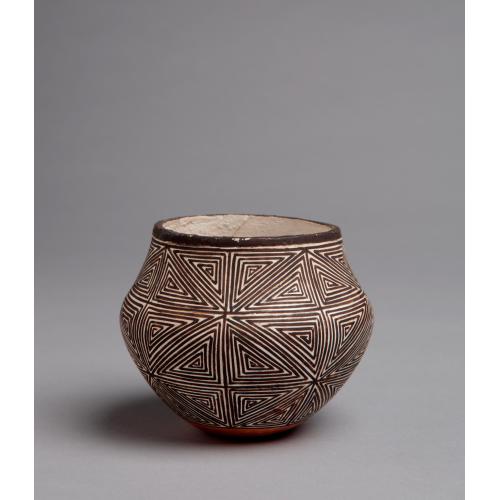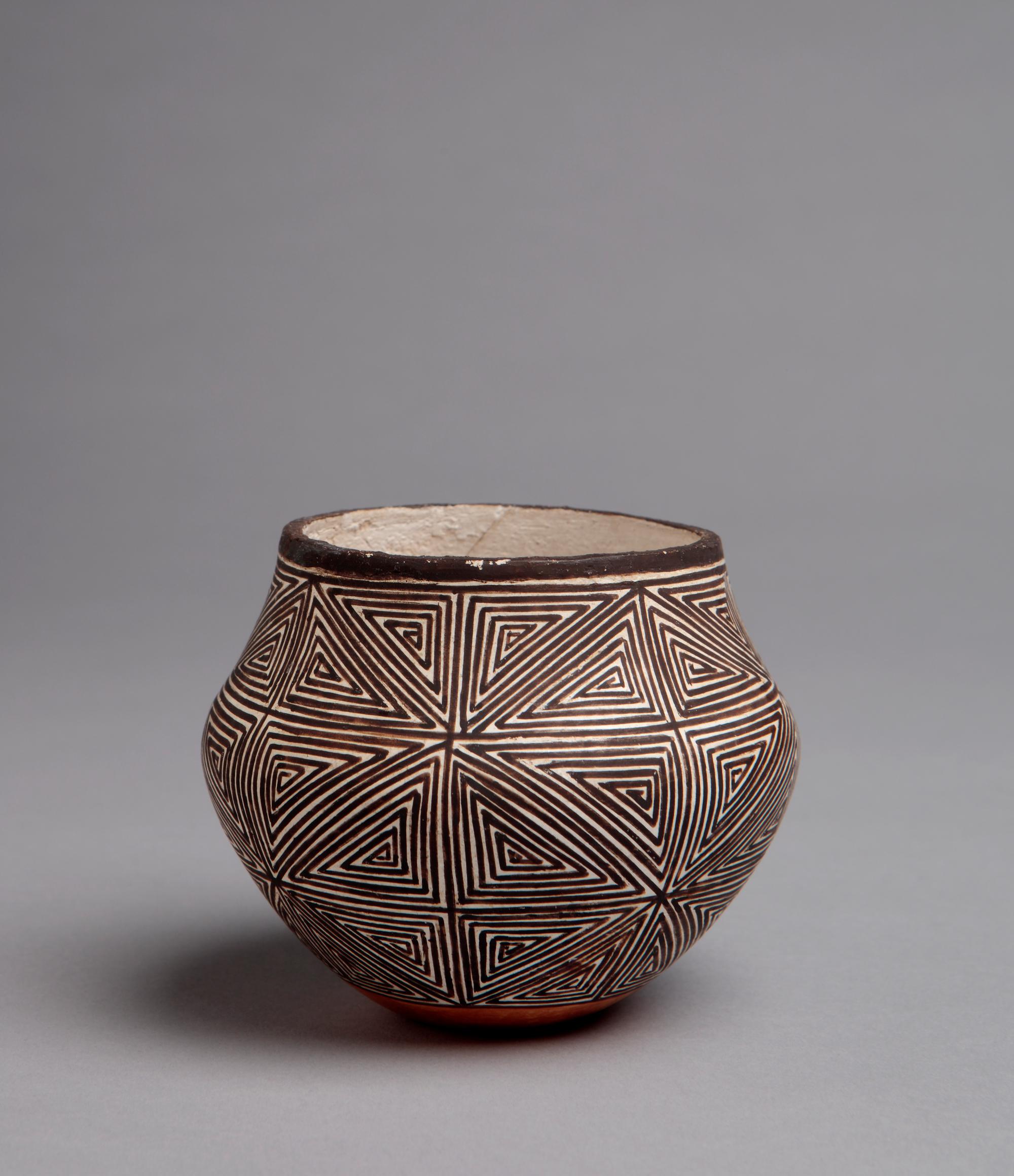
Photograph by Addison Doty. Copyright 2016 School for Advanced Research.
Water jar, miniature
Date: before 1992
Artist or Maker: Lucy Martin Lewis (1898 - 1992)
Dimensions:
Dimensions: 7.5 × 9.2 cm (2 15/16 × 3 5/8 in.)
Weight: 0.1 kg (0.25 lb.)
Medium: clay | paints
Credit Line: Gift of the Estate of Henry L. Upjohn, 1999.
Place Made:
Valencia County, New Mexico, Southwest, United States, North America
Object Number: SAR.1999-1-15
Not on view
Tribal Collection Review RemarksAccording to the participants in the Acoma collection review visit May 11-13, 2016 (Events Record “Collection Review: Acoma Pueblo Review 6”): The materials used to make and paint this jar are all natural Acoma materials. This miniature was painted using a yucca brush.
According to the participants in the Acoma collection review visit February 26-27, 2019 (Events Record “Collection Review: Acoma Pueblo Review 12”: Miniatures came into production primarily as a tourist trade item. With the arrival of modern transportation, such as the train and automobiles, potters began to create smaller pieces that appealed to tourists and were more manageable to travel with, were easy to make, and sold well.
As miniatures have less space for decoration, they often have simple designs. Beginner potters will often start by creating these types of simply designed miniatures. There are potters that create miniatures with very intricate, detailed designs which show their skill level as an artist, as it requires more patience and steady hands.
With the introduction of commercial products beginning in the 1970s, miniatures, like all forms, were also made with commercial clays (either handmade or cast slip). Today at Acoma, potters of all skill levels still make and paint miniatures using both traditional natural materials and commercial materials.
According to the participants in the Acoma collection review visit February 26-27, 2019 (Events Record “Collection Review: Acoma Pueblo Review 12”): The shape of a water jar is characterized by usually having a concave base (can also have a flat base) leading to a wider body and shoulder area. The shoulder, which is typically rounded but can also be sharp, leads inward and up to the neck and opening of the water jar. Historic water jars will sometimes have an indentation from the base the pot was built on (also known as a puki).
Water jars of all sizes are made and used. Medium to small size water jar are more commonly used to carry water as the weight of a filled water jar can become quite heavy. Large sized water jars would be used for storing water. Today at Acoma, water jars are still being used and made in both traditional natural and commercial materials.
According to the participants in the Acoma collection review visit February 26-27, 2019 (Events Record “Collection Review: Acoma Pueblo Review 12”): The shape of a water jar is characterized by usually having a concave base (can also have a flat base) leading to a wider body and shoulder area. The shoulder, which is typically rounded but can also be sharp, leads inward and up to the neck and opening of the water jar. Historic water jars will sometimes have an indentation from the base the pot was built on (also known as a puki).
Water jars of all sizes are made and used. Medium to small size water jar are more commonly used to carry water as the weight of a filled water jar can become quite heavy. Large sized water jars would be used for storing water. Today at Acoma, water jars are still being used and made in both traditional natural and commercial materials.
In Collection(s)
The Indian Arts Research Center, in collaboration with Native American community scholars, strives to present accurate collections records. Records may be updated as new information becomes available and is reviewed with the Native American community having cultural affinity to particular items. Please write to iarc@sarsf.org if you have questions or concerns related to the documentation.
